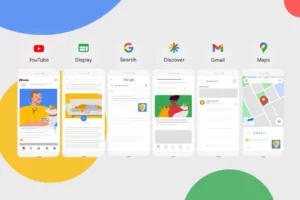When Google embarked on its journey as a tech giant, it didn’t settle for incremental improvements. Instead, it set its sights on ambitious, far-reaching goals that seemed almost impossible to achieve. These projects, known as “moonshots,” represent Google’s bold vision for the future—a future where technology solves some of humanity’s most pressing challenges. From self-driving cars to internet balloons, these initiatives embody the company’s commitment to innovation and its willingness to take calculated risks. But what exactly are moonshot projects, and why does Google pursue them? Let’s explore the stories behind some of Google’s most audacious ventures.
What Are Moonshot Projects?
Moonshot projects are ambitious, transformative endeavors that aim to solve seemingly insurmountable problems. They often involve pushing the boundaries of science, engineering, and imagination to create solutions that seem almost fantastical. Unlike conventional projects, moonshots aren’t confined by immediate practicality or profitability. Instead, they focus on long-term impact, aiming to disrupt industries and reshape society.
Google’s moonshot philosophy stems from its parent company, Alphabet Inc., which encourages experimental ventures through its X division (formerly Google X). X serves as a hub for brainstorming, prototyping, and scaling disruptive ideas. While not all moonshots succeed, those that do have the potential to redefine entire fields and inspire generations of innovators.
Self-Driving Cars: Revolutionizing Transportation
One of Google’s most iconic moonshot projects is Waymo, its autonomous vehicle subsidiary. Launched in 2009 as part of Google X, Waymo aims to bring fully self-driving cars to the masses. The project’s vision is simple yet revolutionary: to eliminate human error, reduce traffic accidents, and create a safer, more efficient transportation system.
The Journey Begins
Waymo’s journey started with a fleet of modified Toyota Priuses equipped with sensors, cameras, and lidar (light detection and ranging) systems. These vehicles roamed the streets of Mountain View, California, collecting vast amounts of data to train the AI algorithms responsible for driving. Over time, the team developed a proprietary sensor suite called “LidarBox,” which provided unprecedented accuracy in detecting obstacles and navigating complex environments.
The Technology Behind the Wheels
At the heart of Waymo’s self-driving technology is its AI-powered perception system. This system combines inputs from multiple sensors to create a 3D map of the surroundings, allowing the car to “see” and react to its environment in real-time. Machine learning algorithms enable the car to recognize pedestrians, cyclists, and other vehicles, while also predicting their movements. This level of situational awareness is crucial for safe navigation, especially in unpredictable urban settings.
Real-World Testing
Waymo’s self-driving cars have logged millions of miles on public roads, from suburban neighborhoods to bustling city centers. These tests have uncovered countless edge cases, such as construction zones, emergency vehicles, and erratic drivers. By continuously refining its algorithms and hardware, Waymo has achieved remarkable reliability, with some pilots reporting accident-free rides spanning thousands of miles.
The Future of Mobility
Waymo’s efforts have already begun to bear fruit. Its autonomous ride-hailing service, Waymo One, operates in Phoenix, Arizona, offering residents seamless, driverless transportation. While full autonomy remains a work in progress, Waymo’s progress marks a significant step toward a future where cars drive themselves, freeing up drivers for more productive or leisurely pursuits.
Internet Balloons: Bringing Connectivity to the World
Another of Google’s bold ventures is Project Loon, a mission to provide internet access to remote and underserved areas using high-altitude balloons. Launched in 2011, Project Loon aimed to bridge the digital divide by delivering affordable, reliable internet to billions of people who lack access.
The Concept Behind Loon
Project Loon’s premise was simple yet ingenious: float balloons into the stratosphere, where they could beam internet signals to the ground below. By harnessing wind currents, the balloons could be steered to specific locations, ensuring coverage where it was needed most. This approach promised to overcome the logistical and financial barriers of traditional infrastructure development.
Engineering the Impossible
Building a balloon capable of surviving harsh environmental conditions while maintaining stable internet connectivity was no small feat. Engineers developed lightweight materials, advanced solar panels, and durable electronics to withstand extreme temperatures, UV radiation, and pressure changes. The balloons also incorporated sophisticated navigation systems, allowing them to adjust altitude and direction based on wind patterns.
Piloting the Idea
Project Loon conducted numerous trials, deploying balloons in countries like Peru, Sri Lanka, and Puerto Rico. During Hurricane Maria, Loon balloons played a critical role in restoring connectivity to devastated areas, demonstrating the project’s potential for humanitarian aid. While the pilot programs showed promise, challenges like battery life, regulatory hurdles, and operational costs slowed progress.
A New Chapter
In 2021, Alphabet announced the shutdown of Project Loon, citing technical and economic limitations. However, the project’s legacy lives on in the form of lessons learned and partnerships forged. While the balloons themselves may not have succeeded, the spirit of innovation remains alive in Google’s ongoing efforts to expand internet access.
Other Notable Moonshot Projects
Google’s moonshot portfolio extends far beyond self-driving cars and internet balloons. Here are a few other noteworthy initiatives:
Calico: Extending Human Lifespan
Calico Labs, founded in 2013, is a biotechnology company focused on extending human lifespan and improving healthspan. While still in its early stages, Calico’s research explores the genetic and cellular mechanisms of aging, aiming to develop therapies that delay or reverse age-related diseases.
Verily: Healthcare Innovation
Verily, another Alphabet subsidiary, is dedicated to transforming healthcare through technology. Its projects range from wearable health monitors to AI-driven diagnostics, with the goal of improving patient outcomes and streamlining medical processes.
Makani: Harnessing Wind Energy
Makani, acquired by Google in 2013, develops airborne wind turbines that generate electricity from high-altitude winds. These turbines fly like kites, capturing energy from stronger, more consistent winds than traditional turbines can access.
The Risks and Rewards of Moonshot Projects
Moonshot projects are inherently risky. They require significant investment, long timelines, and tolerance for failure. Some ventures, like Project Loon, may never reach commercial viability despite their noble intentions. Others, like Waymo, may take years to mature before yielding tangible benefits.
However, the rewards of success are equally profound. Moonshots have the potential to transform industries, create jobs, and improve quality of life. They inspire innovation, attract talent, and position companies like Google at the forefront of technological advancement. Moreover, the knowledge gained from failed projects often informs future endeavors, contributing to the collective body of scientific understanding.
The Philosophy Behind Moonshots
Google’s commitment to moonshots reflects its belief in the power of imagination and collaboration. By encouraging bold thinking and fostering a culture of experimentation, Google cultivates an environment where breakthroughs can flourish. While not every project succeeds, the cumulative impact of these efforts shapes the trajectory of technology and society.
Google’s moonshot projects exemplify the company’s bold vision for the future. From self-driving cars to internet balloons, these initiatives push the boundaries of what’s possible, challenging conventional wisdom and inspiring others to dream bigger. While not every moonshot achieves its intended outcome, the lessons learned and the innovations spawned along the way leave an indelible mark on the world.
As we look to the future, Google’s moonshot philosophy reminds us that progress often requires taking risks and embracing the unknown. By daring to tackle the hardest problems, Google continues to redefine what’s achievable and inspire a new generation of innovators. Whether it’s reshaping transportation, connecting the unconnected, or extending human lifespans, Google’s moonshots remind us that the sky is indeed the limit.
















Add Comment